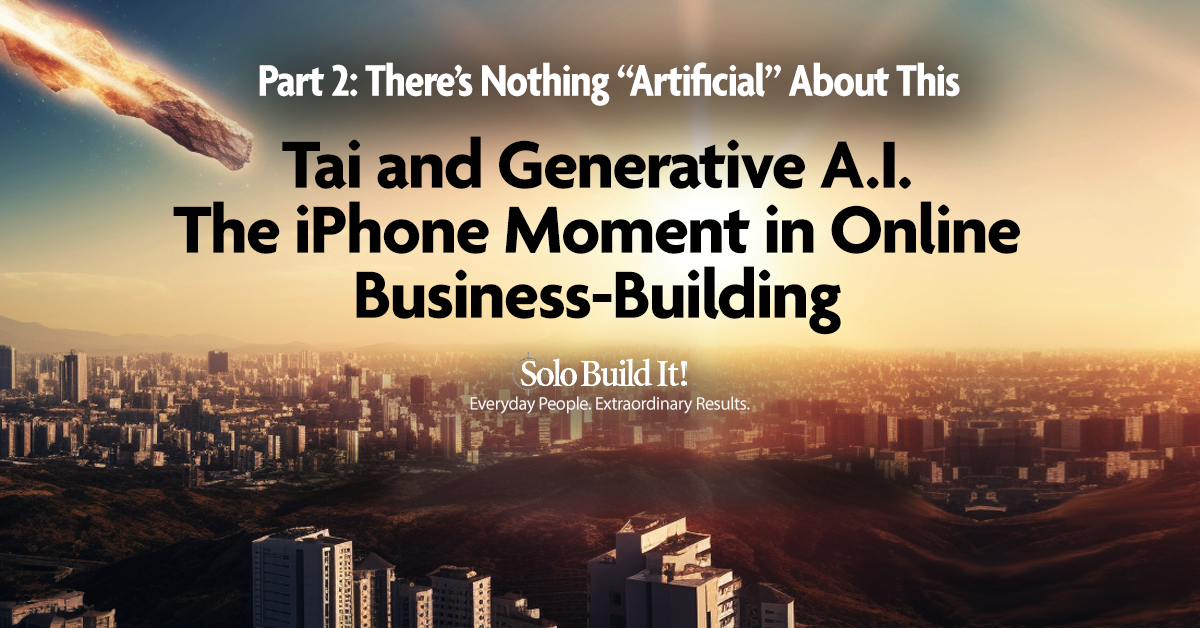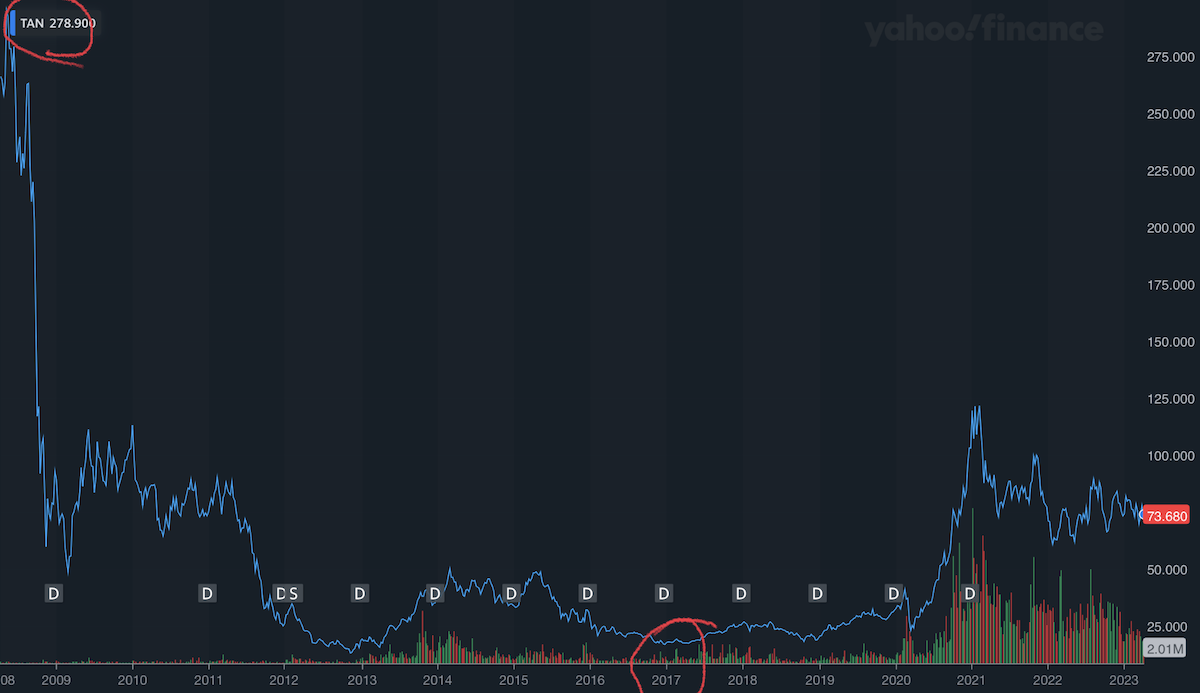In Part 2, we examine how A.I. is a key part of a much bigger picture, one of five new and world-impacting disruptive technology platforms converging to create the most powerful vectors of change ever.
It’s more than “just a key part,” though. It infuses, trains, smartens every other technology that we’ll discuss. In short, it’s the foundation for everything that happens during the next 10-20 years.
Finally and most importantly, Part 2 explores what it all means. The goal is to get you thinking about how to use this largest-ever revolution to grow your online business bigger and better than ever (or whether to start one).
Ready for your iPhone moment?
The Big BIGGER BIGGEST Picture
As we’ve seen, “just” a single disruptive technology produces enormous, planet-wide change. Today, you stand on the most significant summit across the sweep of human history, a threshold of change that’s already progressing at an order of magnitude never before reached.
It’s being driven by the convergence of not one, not three, but five disruptive technological “platforms”…
- Artificial Intelligence
- Energy Storage
- Robotics
- Genome Sequencing
- Blockchain and Crypto
These five major platforms evolve and converge / merge and morph to power revolutions that are already happening in…
- Electric Vehicles
- Autonomous Vehicles (AVs) and Logistics
- Machine/Deep Learning
- Generative A.I.
- Digital Wallets and Digital Consumerism
- Renewable Energies
- “FinTech” (the end of traditional banks)
- Bitcoin
- Ethereum and DeFi (Decentralized Finance)
- Non-Fungible Tokens (NFTs)
- Collaborative Robotics
- 3D Printing
- Internet of Things
- Web3
- 5G/Next Gen Internet
- Quantum Computing
- Cloud Computing
- Metaverse
- Reusable Rockets and Orbital Aerospace
- Proteomics (the study of proteins)
- Immunology-based cures for cancer
- Longevity/life extension
All are impacted heavily by A.I., making them stronger, faster, more capable and so on.
These are not future pipe dreams. They’re active technologies available in VC-funded or publicly traded businesses today. Yet they all still have a relatively small footprint, ranging from…
- “just getting started.” Quantum computing is still at the research stage, but you can already buy quantum time at Google.
to
- “you think this is big?” Electric vehicles are, arguably, the most commercially advanced. Even Tesla, though, close to a trillion dollar company today, is a small fraction of what it will be in ten years.
Exponential growth will make them all ubiquitous, creating many tens of trillions of dollars of US GDP (double that globally) in the next 10-20 years. If you find yourself thinking, “I want a piece of that”…
You’re in the right place!
Why is this relevant to you?
In this exciting era of exponential change on so many fronts, you’re in the perfect position to use GAI to maximally impact your business and your life.
As we move through the seven parts of this series, you’ll learn how to convert GAI’s raw potential into best-of-breed online business results.
More Perspective
Let’s get a little more precise than “you ain’t seen nothing yet.” On a scale of 1 to 100, how advanced is each technology?
Quantum computing would be a 1 (still mostly research). EVs (electric vehicles) around 8, reaching its inflection point, ready to “go vertical.”
Machine/Deep Learning, Digital Wallets and Digital Consumerism, Renewable Energies, FinTech, Bitcoin, Ethereum and DeFi, 3D Printing, 5G/Next Gen Internet, Cloud Computing, and Reusable Rockets and Orbital Aerospace are on a higher order of magnitude (give or take).
The rest, while ready-for-primetime, are only at various stages of “just getting going.” Each, though, is already making its own particular impact.
What about A.I.? Like electricity, it will be so ubiquitous, so much a part of everything, that you can’t place the general concept of A.I. on a precise scale. The total potential is so immense, with so many sub-technologies, that it’s difficult to even put a ballpark number on it.
It does, though, deserve its own conversation. Let’s zoom out for A.I.’s big-picture perspectives…
Perspective #1) A.I. Is Everywhere
Data is “the new oil.” Global data generation is exploding exponentially…
- Approximately 64 zettabytes of data (text, image, video) were created, captured, copied, and consumed globally, from the beginning of time to the end of 2020. 1 zettabyte = 1 billion trillion bytes (or 1 sextillion bytes). Sounds like a ton of data, right? Well yeah… It is. But we’re just getting warmed up.
- 180 zettabytes will be created from 2021 through 2025! That’s almost triple the amount created from the “Big Bang” to the end of 2020.
Data, it turns out, is right up A.I.’s alley. A.I. consumes and works data in a wide variety of ways, converting it into monetizable products and services. The more data, the more intelligent and valuable are the goods and services spun off by A.I.
Looking for a good investment? Ask yourself which companies have the most massive and specialized data in the world. Then imagine what could be done with that.
Start with Tesla and its gazillions of test hours of its autonomous driving technology.
Given the exponential growth of data, expect A.I.-generated products and services to become exponentially better over time.
Smart prediction is one of A.I.’s super powers — Generative A.I. (“GAI”) is an excellent example of this. GPT, a core technology of GAI, works its magic on text data specifically. As we’ll soon see, it powers products like OpenAI’s GPT-4 and Google’s Bard to generate content that’s at a “created by a human” level.
“All” it’s really doing, though, is analyzing the context of the prompt and any conversation that came before. It uses the analysis to predict the next word, then the next and the next, until it has created content that’s so close to how you or I might respond, it seems to be doing something remarkably more than “prediction.”
You could say that ChatGPT is the world’s most advanced “text prediction machine.”
At the time of this writing, GPT-4 is significantly better than Google’s Bard, as well as that of Facebook, Baidu, Alibaba, open source models, and all other text-based GPTs. Therefore, I’ll stick with it for the rest of this series of posts when when talking about text-based GAI.
Remember, GPT-4 does not generate images (that’s done with DALL-E, MidJourney, and other services). Nor does it “do video” (there’s a variety of startups working on that).
Perspective #2) Unimaginable Power at a Super-Low Price
A.I.’s capabilities have been growing exponentially over the past decade, with performance doubling roughly every 3.4 months, according to OpenAI’s analysis. That’s roughly 10X per year!
If progress continues at this rate, we can expect A.I. capabilities to grow significantly…
1 year: ~10x more powerful
2 years: ~100x more powerful
3 years: ~1,000x more powerful
4 years: ~10,000x more powerful
5 years: ~100,000x more powerful
Caveat: Actual growth of A.I. capabilities may deviate due to unforeseen breakthroughs or challenges, regulatory changes, or shifts in research focus.
This astronomical power increase is our first glimpse at the power of the S-curve. To grasp where GAI is headed, we also need to understand The S Curve of Innovation.
Technological Innovation
Every technological innovation starts slowly and expensively. For example, the amount of electricity that solar panels could capture in 2010 was minuscule per dollar spent.
Then, as time passed, the technology not only improved in a nonlinear way, its cost also dropped as volume grew. When this happened, more research and development went into the technology, increasing its power, which increased its sales volume, which dropped the price further.
You can see this flywheel effect/virtuous circle in graphic format below. Note…
- The beginning (far left): Technological power (red) is low and increases slowly. Price is high and drops slowly.
- The “end” a.k.a. the mature stage (far right): Technological power (red) is high, increasing slowly. Price is low and drops slowly. These are the natural outcomes of maturation.
- The in-between: Even a quick glance reveals why it’s called an “S-curve.” At the inflection point, Power and Price go increasingly vertical (⬆️ for Power and ⬇️ for Price). This is the “suddenly” part of “gradually then suddenly.” This is where GAI is.
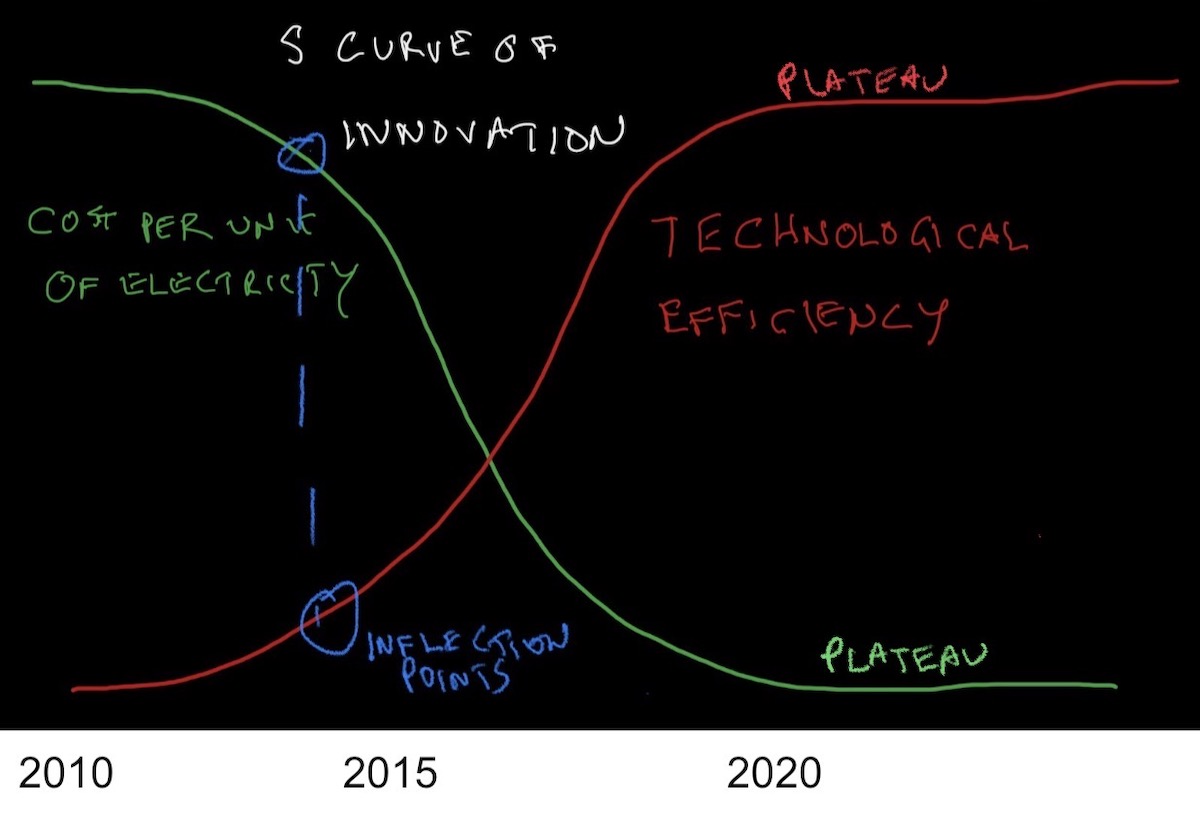
How to Make a Small Fortune Investing in A.I.
Investors famously invest in disruptive technologies too soon. The 10+ years between each major innovation seem to dull their memories. More likely, “FOMO + $” is just too great a sum for us greedy humans. 😭
Time after time, they sink billions into vision and hype, often in a “mania” driven by greed or FOMO or both. Whatever drives it, being too early (as an investor) is a case of “right vision, wrong timing.”
New funds that invest in hyped-up technologies tend to hit the market not too far from the peak of excitement. Here you can see how investors piled into a new one in 2008. Blessed with a wonderful ticker, “TAN,” there were way too many investors chasing too little stock.
And sure enough, billions were lost when investors finally realized that solar was not going to be commercializable soon. The outcome was inevitable because the technology was still stuck at the slowly improving high Price and low Power plateaus.
While those plateaus will eventually “go vertical,” it was taking too long to get there for most investors. The price dropped in a vicious “sell stock > stock price drops > sell more” negative feedback loop.
Eventually, investors forgot the whole sad episode (or tried to). However, the scientists kept working at it. In the case of solar, by 2020 solar panels were more powerful and their cost was dropping.
Ready for prime time, solar stocks were ready to follow that lead. Until then, investors wept. Speaking of that…
If you’re wondering how to make a small fortune by investing in disruptive technologies💰…
Start with a (very) large one.💸💸💸
Or you could deeply educate yourself and wait until a year or so before it’s “ready for prime time.” Note again the two S-curves above…
See where “Technological efficiency” has turned and is sloping strongly towards its high plateau, while “Cost per unit of electricity” is doing the opposite?
It’s primetime! The cost/benefit ratio is now good enough to make the technology commercializable, and it’s only going to get better for the foreseeable future.
Stock prices may have already exploded, so could be way too expensive. That’s why it’s best to be early and wait. But that’s just my two cents, which is all I have left. I’ll touch a bit more on this in Part 3, after I pull myself together.😢
What Few Are Talking About
With five major disruptive platforms and at least 14 discrete technologies, together with the incredible compute power now available to us, there’s very little that can’t be invented and developed right now. For example…
Combine two technologies to definitively disrupt the auto industry…
- energy storage (its advanced battery technology),
- zero-emission electric powertrain (replaces I.C.E.)
This is the stripped-down-to-the-core answer to the “what is Tesla?” question.
Mix in the following three technologies and you get something even more important than EVs… AVs (autonomous vehicles).
- cloud and big data storage
- next-level machine learning / A.I. (its autopilot and self-driving technology)
- next-level robotics
I said “next level” because AV is approaching AGI, which stands for “Artificial General Intelligence.” This is a hypothetical intelligent agent that can understand or learn any intellectual task that human beings can do.
AGI and AVs
It’s incredibly difficult for technology to achieve what a 16 year old learns in a month or two, and then does for the rest of his life… drive a car.
AV technology has been “a year or two away” for at least five years. Every time it feels like we’re getting closer, the horizon recedes yet again.
Suffice it to say that we humans still have some pretty super-duper technology of our own that A.I. can’t master… yet.
How Important Will AVs Be?
In 20 to 30 years, AVs will have such an edge on safety and be so efficient due to Internet connectivity, you’ll need a special license to drive a non-AV car in special areas for that leisure activity. Few will need, likely even want, to own their own automobiles.
AVs are important enough that they will generate demographic ripples. People will happily commute from exurban communities, 50-60 mile commutes each way, because they’ll be working, reading or playing A.I. video games in nicely appointed “rooms on wheels.”
Other technologies, such as over-the-air (OTA) software updates and charging infrastructure, are an important part of today’s EV picture. That said, I consider them to be derivative necessities rather than prime drivers.
And, in case you’re wondering, I’m omitting a discussion of its many substantial business model advantages as they’re not germane to the topic of innovative technology.
On the other hand, future plans to integrate vehicle-to-grid (V2G) technology could turn the whole fleet into a distributed electrical grid! V2G technology allows EVs to act as energy storage devices and feed electricity back into the grid when needed.
This disruptive technology has the potential to enhance grid stability, lower electricity costs, and enable greater integration of renewable energy sources.
So?
So this…
Disruptive platforms combine into a wide variety of ways to achieve the various product revolutions mentioned earlier. The more technologies mixing it up, the more likely we are to see, not just amazing, previously unpredictable new businesses, but entirely new industries!
The combinations formed multiply into unique, and uniquely powerful, output because of…
- the nature of the combination itself and what’s selected, and also because
- the technologies’ S-curves overlay, one upon the other, intensifying their effects on cost and benefit.
I will close this with a fun, but gigantic, example…
Let’s pick up Tesla at its “AV, 4-technology version.” Now…
- Remove the wheels and add legs (already being worked on by Tesla, and others).
- Reduce battery size and fine-tune its software.
- Introduce GAI.
- Add the ability for this GAI to have a personality, back story and memory. It can even remember and follow plans over protracted periods of time.
- Now create 25 different characters like this, each different and living in a town called Smallville.
Think I’ve lost it?
Nope. Here’s the story.
But will they go to a Valentine’s Day party?
So what are so few talking about? With all these technologies available at the same time, we haven’t even scratched the most superficial layer of what will be done.
The results that emerge will be astounding.
I’ll go so far as to predict the unexpected fix(es) to climate change. I have no idea how, but that’s the whole point…
Loads of “white swans” are coming.
Now let’s apply this…
World, Here We Come!
GAI has special importance for you. S-curves work the same way for every technology, including GAI.
The field struggled for years, barely moving along those plateaus, until Google’s landmark publication about Transformer technology in 2017. That focused research and development in the right direction, pushing OpenAI to its groundbreaking release of GPT-1 in 2018.
Suffice it (for now) to say that three releases later, ChatGPT represented the steepest inflection point of all time. GPT-4 is so powerful that sophisticated people are talking about AGI in the same breath. And A.I. safety has become a much (more) discussed issue. I’ll delve more into this during Part 4 of the series.
I’ll be discussing GAI, with the focus on GPT-4, throughout this series, getting you up to speed and beyond. It leaves its competition in the dust.
Armed with all the information in these first two posts, you’ll have the contextual foundation necessary for the most disruptive technology ever. Specifically, you’ll be ready to get the most out of GAI (specifically GPT-4) when used as a solopreneurial tool (that keeps getting exponentially better / cheaper).
For now, recognize that GPT-4 acts on the “C” of Solo Build It!’s C T P M, the core process that we first introduced to solopreneurs in the late 90s, years before the concept was more widely accepted and then adopted as “content marketing.”
Believe it or not, there was a pre-Google and an early Google period when the concept of a “theme-based content site” outranking individually SEO’d pages at search engines was considered by hard-core SEOers as an absurdity. Sacrilege, even!
We know how that turned out. Fast forward to today…
Together with the prioritization of OVERdelivering on search intent, the SBI! process continues to outperform all other platforms, all the while being less vulnerable to major changes in Google’s algorithm.
We do more than just state this. In an industry replete with false promises, claims must be supported. We do that with these studies, which include instructions that enable anyone to do their own study to check the truth.
SBI! to the Power of 2
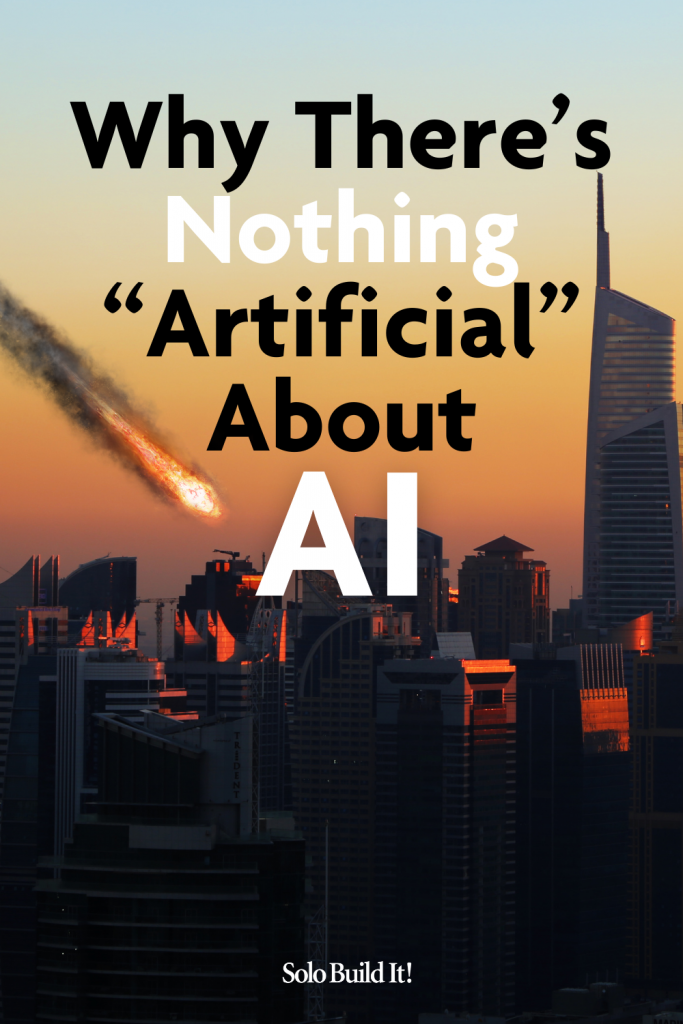 We have continuously updated, evolved and improved the SBI! process, and its step by step execution. The integration of Tai is the most exciting and powerful move forward yet.
We have continuously updated, evolved and improved the SBI! process, and its step by step execution. The integration of Tai is the most exciting and powerful move forward yet.
SBI!’s effectiveness is about to take a great leap forward. Tai, the solopreneur’s business-building assistant, harnesses the raw power of GPT-4, converting it into a clean, reproducible, step-by-step process that works.
Tai’s four components (Prompt Build It!, the Community Prompt Library, StyleBuilder and the Boxchain step-by-step process) work exactly the way SBI! does. Here’s why SBI! is so effective…
Even back in 2002, there was too much information to keep up with, too many tools to try.
By creating all the tools you need, and supplying all the information you need, pulled together into a step-by-step process, guess what?
We do not make successful business-building easy. That will never be possible. But we do make winning reproducibly simple.
In other words, turning the complicated matter of building profitable online businesses into a reproducible step-by-step process, all a person has to do is execute, step… by step… by step.
By including everything under one roof — information and tools — the solopreneur can focus 100% on building her business rather than FOMOing from guru to guru, from tool to tool.
Tai works the same way. It’s the one-stop way to master GAI, with everything under one roof…
- Prompt Build It! turns prompting into a foolproof science instead of a hard-to-master art.
- Use the StyleBuilder tool to train Tai to write in any style, including an enhanced version of your own.
- The Community Prompt Library comes pre-stocked with more than 1,000 proven prompts, soon to be rated by those who use Tai.
- The final part of this uniquely powerful tool is the “Boxchain”…
There are loads of ways to go wrong with GPT-4 and end up with a suboptimal result… not with Tai’s Boxchain leading you, step by step.
Tai is as revolutionary as SBI! was (and still is!) when we introduced it in late 2001 to turn C T P M into a step-by-step foolproof process. Here’s the idea…
“Tai makes it simple, but not easy.”
We will never claim that online business-building is “easy.” It’s not true. We do, though, turn the process into a series of many simple steps, executable and reproducible, that generate page after page of outstanding content in your field.
I would even go so far as to say that you, too, will stand out in your field!
And remember… The “C” of Content is what drives C T P M. Increasing the quantity and quality of content, while also OVERdelivering on your visitors’”search intent,” will inevitably drive traffic.
Tai, by working the same way as SBI!, and by plugging straight into the C, has generated…
”SBI! to the Power of 2.”
Bottom Line?
Tai can empower every web-based solopreneur, whether using it as an integration within SBI! or as a standalone product for non-SBIers.
Whether you try Tai or not (and I do hope you try it — the trial is free), every statement above applies to the use of GAI. That means that it applies to every solopreneur with an online business.
To summarize, GAI will become enormously powerful at very little cost due to…
- The power of the technology itself is increasing exponentially.
- The cost is decreasing exponentially over time, too, due to increasing volumes.
- The combination of Generative AI and the technologies upon which it’s built, along with GAI-specific features that are coming (e.g., plugins), will prove to be more powerful than OpenAI’s initial wildest dreams.
- The S-curve overlap serves as the final multiplier of the power/cost ratio.
We’ve seen how an exponential explosion of data, ongoing research and development, and the S-curve will make GAI exponentially better, and quickly so. I mean, just imagine the power of GPT-7!
Failure to start using GPT now can only result in falling exponentially farther behind over time.
Today, you got a sense of why both the big picture of disruptive technologies and the more specific look at GAI generate an important conclusion: you’ll grow your online business more effectively than you ever have before.
In Part 3, I talk about a couple of topics that I enjoy. I hope that you will too.
One is about a completely different way to generate income from disruptive technologies.
The other? Covid has accelerated a trend that few were aware of. You’ll be positioned to capitalize on it. I show you how to become a “sovereign individual.”
See you in Part 3.
If you missed Part 1, a link to it is available here.
By the way, if you have questions or comments, please leave them below. I read them all and will answer many.
Ditto for using A.I. to grow an online business. Is there a topic that I haven’t covered? Let me know how you would like me to extend the series. I’m all 👂s!
Until we meet next time, be great.
Images by DALL-E and Midjourney.
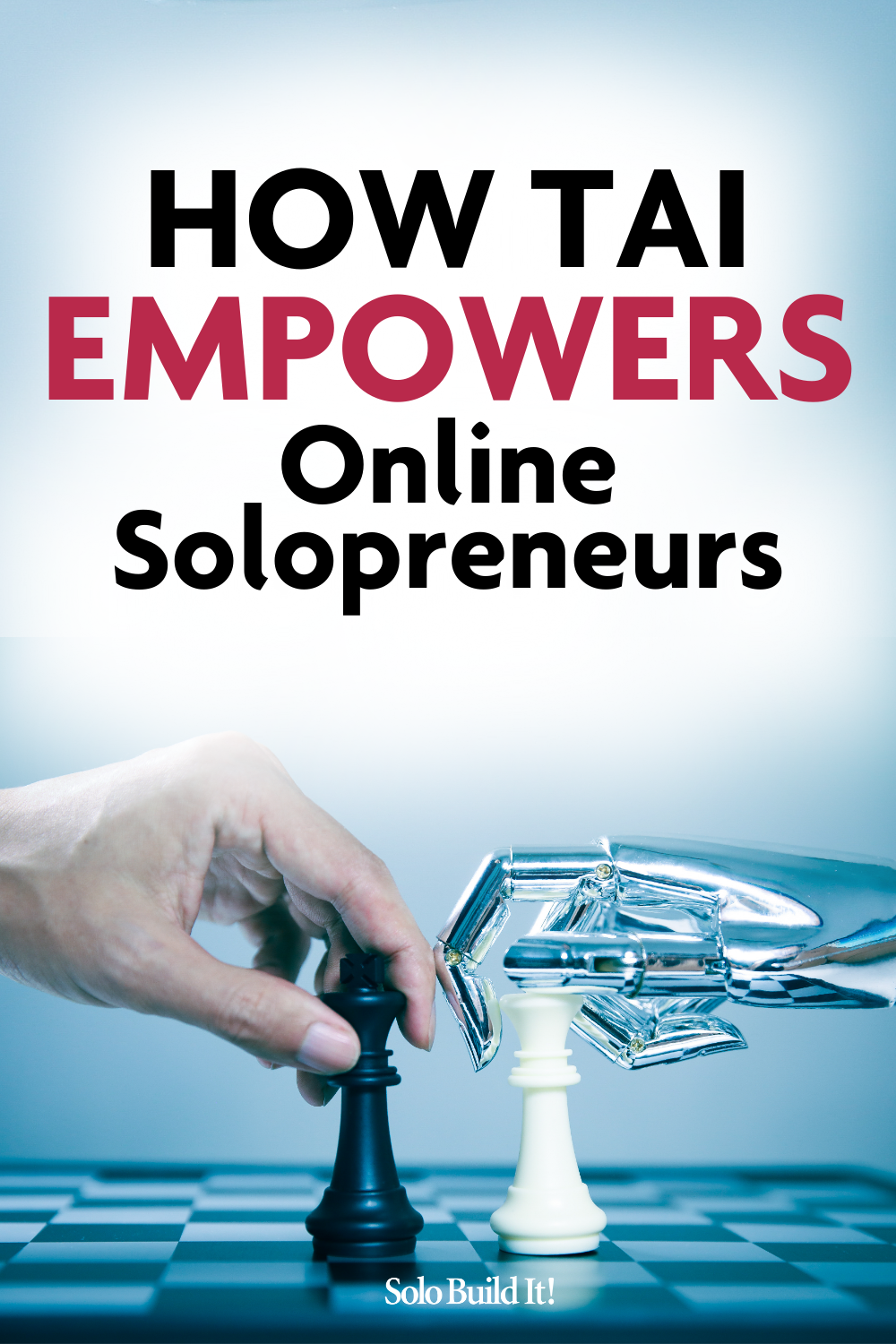
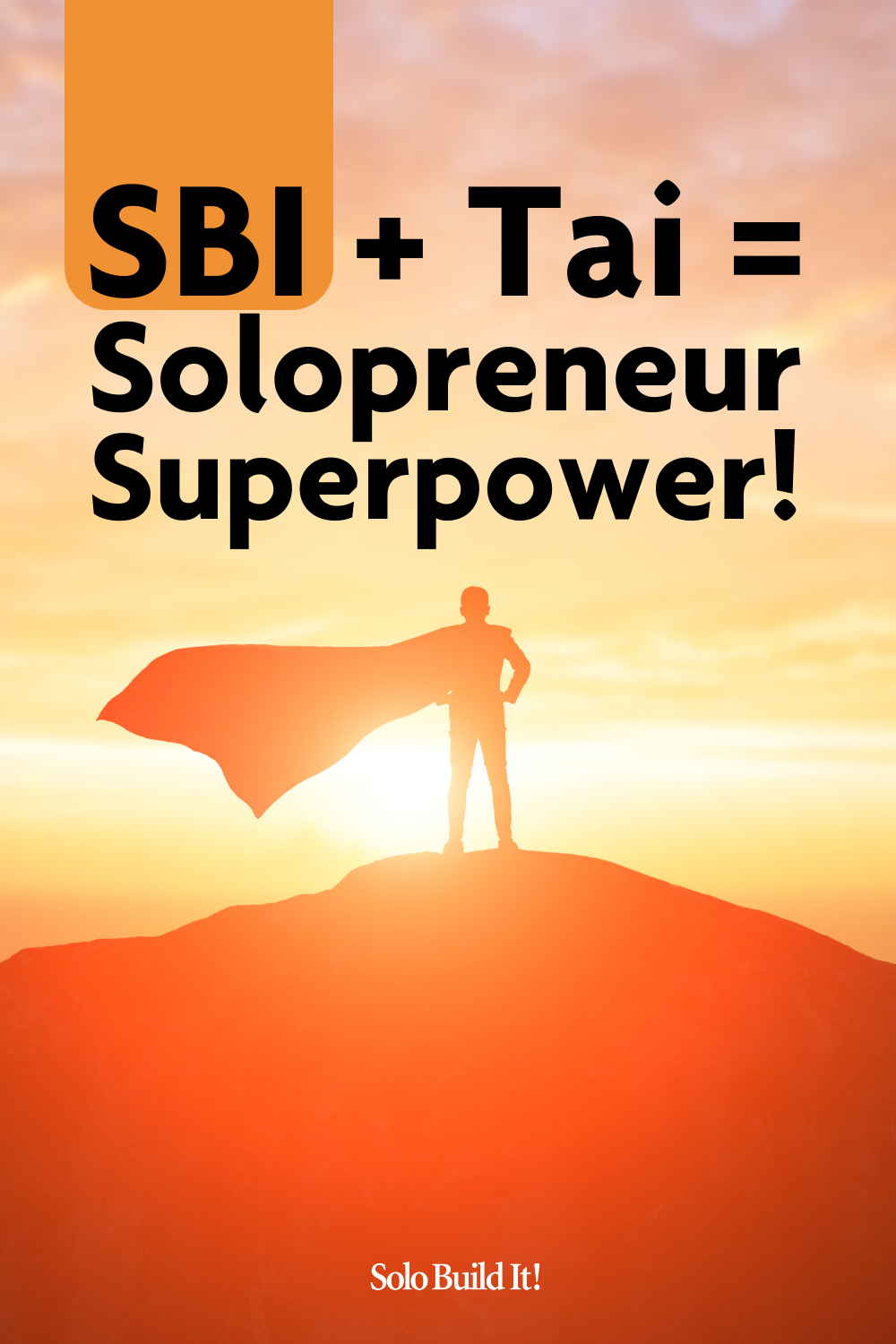
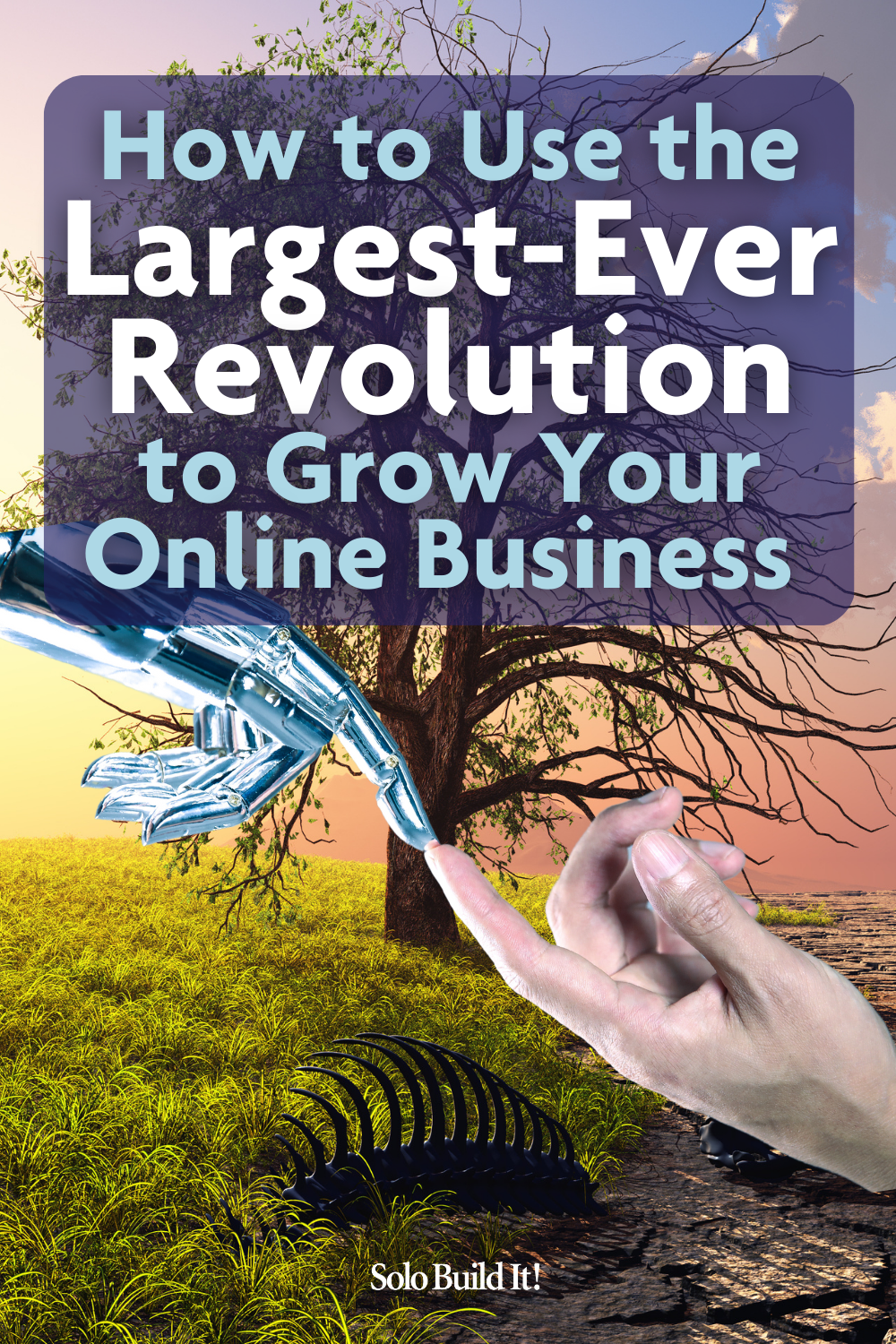
Latest posts by Ken Evoy (CEO, SiteSell) (see all)
- Understanding the 3 Phases of Search: A Guide for Website Owners - April 10, 2025
- Large Language Models: What Content Creators Need to Know - March 13, 2025
- Beyond the Helpful Content Update: The Real Lessons Google Is Teaching Us About the Future of Search - February 19, 2025

